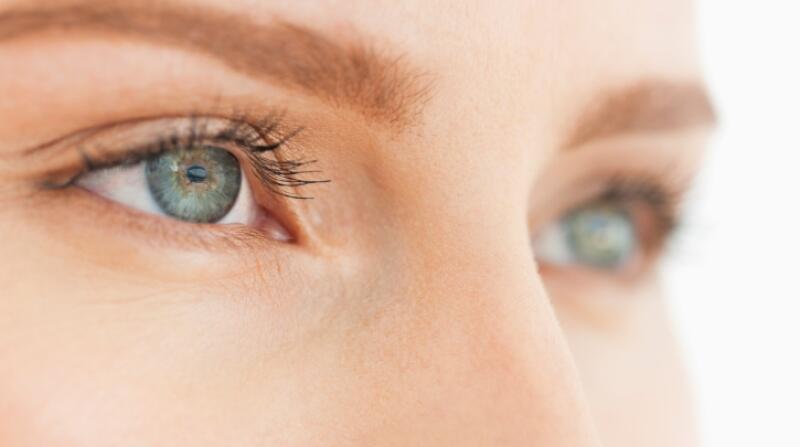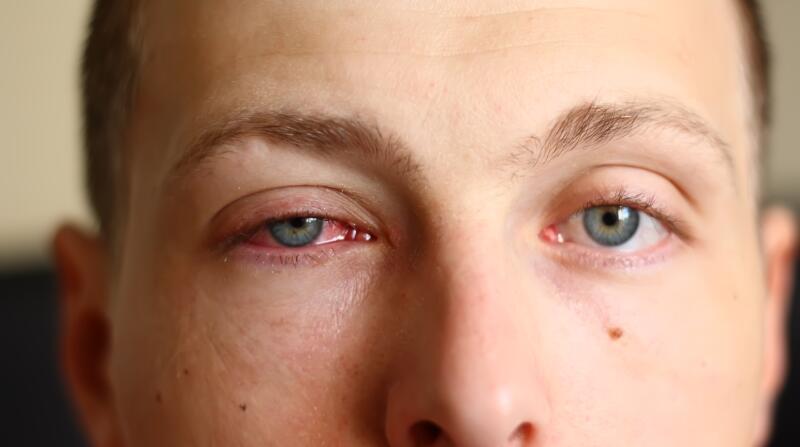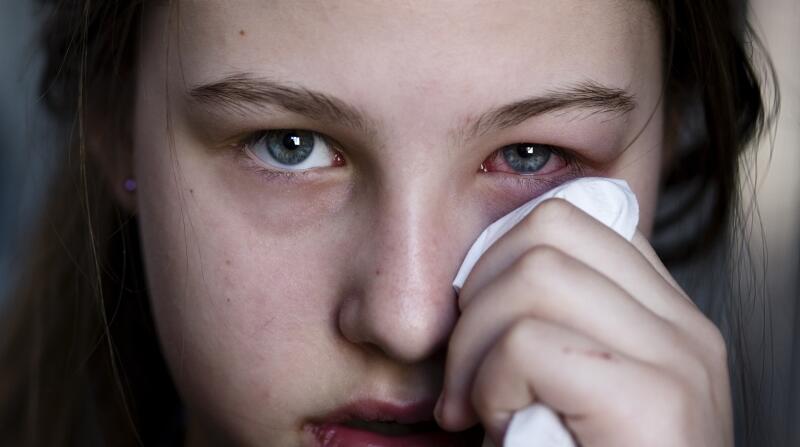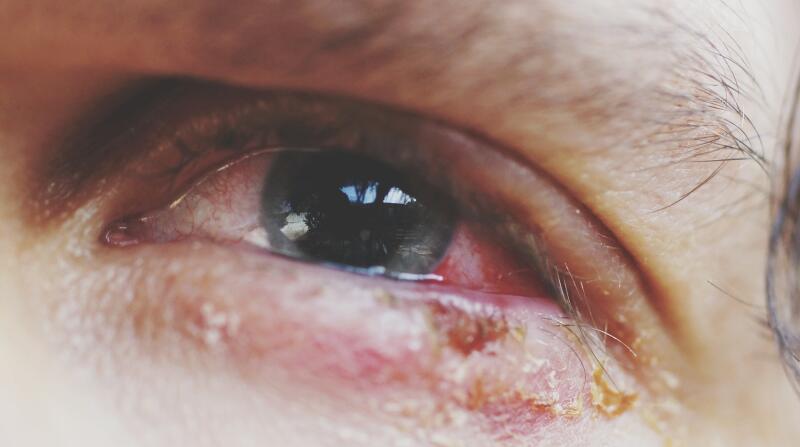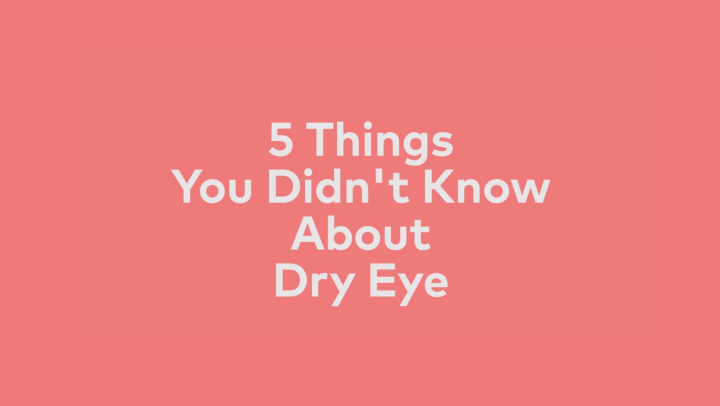8 Common Eye Symptoms and What They Mean

Medically Reviewed By William C. Lloyd III, MD, FACS
Written By Healthgrades Editorial Staff on September 21, 2020
-
 Get Eye Smart to Protect Your VisionMany problems with your eyes are easy to see as soon as you look in a mirror. But, it's not always easy to know if they need fast attention from your eye doctor. Eye symptoms can include redness, puffiness, and dry or watery eyes. Some are signs of minor eye problems and are nothing to worry about. Others need treatment, sometimes right away. Here's a list of common eye symptoms and what might be causing them.
Get Eye Smart to Protect Your VisionMany problems with your eyes are easy to see as soon as you look in a mirror. But, it's not always easy to know if they need fast attention from your eye doctor. Eye symptoms can include redness, puffiness, and dry or watery eyes. Some are signs of minor eye problems and are nothing to worry about. Others need treatment, sometimes right away. Here's a list of common eye symptoms and what might be causing them. -
 1. Red EyesRed, bloodshot eyes have many possible causes. Redness usually comes from swollen blood vessels, bleeding in the eye, or a minor irritation. Eye redness can mean you have an eye infection. A common one is pinkeye (conjunctivitis). Another is keratitis, which is an inflamed cornea (the front part of your eye). Other causes include a tiny cut or scrape or a burst blood vessel,. You may have an ulcer on your eye that's irritating it. Seasonal allergies and allergies to dust or pet dander can lead to red eyes, too. A sudden attack of high pressure in the eye (acute glaucoma) is another cause. Acute glaucoma is a medical emergency that needs treatment right away.
1. Red EyesRed, bloodshot eyes have many possible causes. Redness usually comes from swollen blood vessels, bleeding in the eye, or a minor irritation. Eye redness can mean you have an eye infection. A common one is pinkeye (conjunctivitis). Another is keratitis, which is an inflamed cornea (the front part of your eye). Other causes include a tiny cut or scrape or a burst blood vessel,. You may have an ulcer on your eye that's irritating it. Seasonal allergies and allergies to dust or pet dander can lead to red eyes, too. A sudden attack of high pressure in the eye (acute glaucoma) is another cause. Acute glaucoma is a medical emergency that needs treatment right away. -
-
 2. Thick DischargeA thick substance like pus or mucus oozing from your eye usually means an infection. This is another sign of keratitis or conjunctivitis. Fungi, viruses and bacteria cause these types of infections. Different types of infections need different treatments. For instance, a yellow or green discharge can be a sign of a virus. Sometimes dust or dirt gets in the eye. This can cause clear or creamy-colored mucus that goes away when your tears wash it out.
2. Thick DischargeA thick substance like pus or mucus oozing from your eye usually means an infection. This is another sign of keratitis or conjunctivitis. Fungi, viruses and bacteria cause these types of infections. Different types of infections need different treatments. For instance, a yellow or green discharge can be a sign of a virus. Sometimes dust or dirt gets in the eye. This can cause clear or creamy-colored mucus that goes away when your tears wash it out. -
 3. Watery EyesMany things can cause your eyes to water. It could be your eye's attempt to wash away dust or dirt. A blocked or infected tear duct can also cause watery eyes. Blocked tear ducts and eye watering are very common in newborn babies. Eye allergies also can cause watery eyes. Infections—conjunctivitis, keratitis and even the common cold— can be to blame. Problems with your eyelids can make eyes water, too. Eyelids turned the wrong way or inflamed eyelids increase tears in the eyes.
3. Watery EyesMany things can cause your eyes to water. It could be your eye's attempt to wash away dust or dirt. A blocked or infected tear duct can also cause watery eyes. Blocked tear ducts and eye watering are very common in newborn babies. Eye allergies also can cause watery eyes. Infections—conjunctivitis, keratitis and even the common cold— can be to blame. Problems with your eyelids can make eyes water, too. Eyelids turned the wrong way or inflamed eyelids increase tears in the eyes. -
 4. StyeA red bump that looks like a pimple on your eyelid is usually a stye. A stye forms when oil glands on or in your eyelid come into contact with bacteria. This creates an infection. A stye might feel sore but is usually nothing to worry about. Your eyelid may swell, look red, and feel uncomfortable. A stye can cause your eye to water. Styes usually get better without treatment. However, a warm, damp cloth on your eye and gentle massage can help. You should see an eye doctor if a stye gets worse or doesn't go away in a few days
4. StyeA red bump that looks like a pimple on your eyelid is usually a stye. A stye forms when oil glands on or in your eyelid come into contact with bacteria. This creates an infection. A stye might feel sore but is usually nothing to worry about. Your eyelid may swell, look red, and feel uncomfortable. A stye can cause your eye to water. Styes usually get better without treatment. However, a warm, damp cloth on your eye and gentle massage can help. You should see an eye doctor if a stye gets worse or doesn't go away in a few days -
 5. Sticky, Crusty EyesWaking in the morning with sticky, crusty eyes and eyelashes usually means you have an infection. Conjunctivitis, for instance, often causes a sticky discharge that crusts over on lashes. A blocked tear duct can do the same. Another condition that causes crusting is blepharitis. This happens when bacteria collect inside the rim of your eyelid and cause swelling. The eyes and eyelashes often get goopy and have crusty flakes on them. An infection or a skin problem, including rosacea, can cause blepharitis.
5. Sticky, Crusty EyesWaking in the morning with sticky, crusty eyes and eyelashes usually means you have an infection. Conjunctivitis, for instance, often causes a sticky discharge that crusts over on lashes. A blocked tear duct can do the same. Another condition that causes crusting is blepharitis. This happens when bacteria collect inside the rim of your eyelid and cause swelling. The eyes and eyelashes often get goopy and have crusty flakes on them. An infection or a skin problem, including rosacea, can cause blepharitis. -
-
 6. FloatersFloaters are dark spots in your line of vision. They can be stringy or look like specks of dust. They often develop as you get older and your eyes change. Inflammation in the eye also causes floaters. So can an injury or a blood vessel problem with bleeding in the eye. Sometimes floaters are a sign of an emergency problem, such as a torn or detached retina. A detached retina happens when your retina pulls away from your eye. It can lead to blindness without prompt treatment.
6. FloatersFloaters are dark spots in your line of vision. They can be stringy or look like specks of dust. They often develop as you get older and your eyes change. Inflammation in the eye also causes floaters. So can an injury or a blood vessel problem with bleeding in the eye. Sometimes floaters are a sign of an emergency problem, such as a torn or detached retina. A detached retina happens when your retina pulls away from your eye. It can lead to blindness without prompt treatment. -
 7. Puffiness and SwellingYour eyelids or the skin around your eyes may swell and look puffy. This can happen for many reasons. An injury to your eye or allergies are possible causes. Blepharitis can cause swollen eyelids. So can a stye or a chalazion, another type of bump. Eye infections like conjunctivitis and infection of tissues around the eye (cellulitis) also cause the eyes to swell. A type of eye cancer in children (retinoblastoma) sometimes leads to swollen eyes and redness.
7. Puffiness and SwellingYour eyelids or the skin around your eyes may swell and look puffy. This can happen for many reasons. An injury to your eye or allergies are possible causes. Blepharitis can cause swollen eyelids. So can a stye or a chalazion, another type of bump. Eye infections like conjunctivitis and infection of tissues around the eye (cellulitis) also cause the eyes to swell. A type of eye cancer in children (retinoblastoma) sometimes leads to swollen eyes and redness. -
 8. Dry EyesDry eyes are a common complaint, especially among older people. This occurs when you don't make enough tears to keep them moist, or the tears don't drain right. Symptoms can include an uncomfortable, gritty feeling in your eyes or even watery eyes. Medical conditions that can cause dry eyes include thyroid problems, blepharitis, diabetes and rheumatoid arthritis. Dry eyes can also be a side effect of medications, such as certain blood pressure drugs, antidepressants and allergy and cold-relief drugs. Some people experience dry eyes after eye surgery. Special eye drops help many people with dry eyes.
8. Dry EyesDry eyes are a common complaint, especially among older people. This occurs when you don't make enough tears to keep them moist, or the tears don't drain right. Symptoms can include an uncomfortable, gritty feeling in your eyes or even watery eyes. Medical conditions that can cause dry eyes include thyroid problems, blepharitis, diabetes and rheumatoid arthritis. Dry eyes can also be a side effect of medications, such as certain blood pressure drugs, antidepressants and allergy and cold-relief drugs. Some people experience dry eyes after eye surgery. Special eye drops help many people with dry eyes. -
 When to See an Eye SpecialistAlthough some of these symptoms could be due to minor problems like dust in your eye, it’s not always easy to tell. Any symptoms of a potential vision problem like a detached retina or glaucoma require immediate medical treatment. For other symptoms, it’s best to err on the side of caution and see your primary care doctor or an eye doctor. If you need treatment, starting it early is typically most effective and helps avoid potential complications. Start your search on Healthgrades.com for an eye specialist in your area.
When to See an Eye SpecialistAlthough some of these symptoms could be due to minor problems like dust in your eye, it’s not always easy to tell. Any symptoms of a potential vision problem like a detached retina or glaucoma require immediate medical treatment. For other symptoms, it’s best to err on the side of caution and see your primary care doctor or an eye doctor. If you need treatment, starting it early is typically most effective and helps avoid potential complications. Start your search on Healthgrades.com for an eye specialist in your area.
8 Common Eye Symptoms and What They Mean
